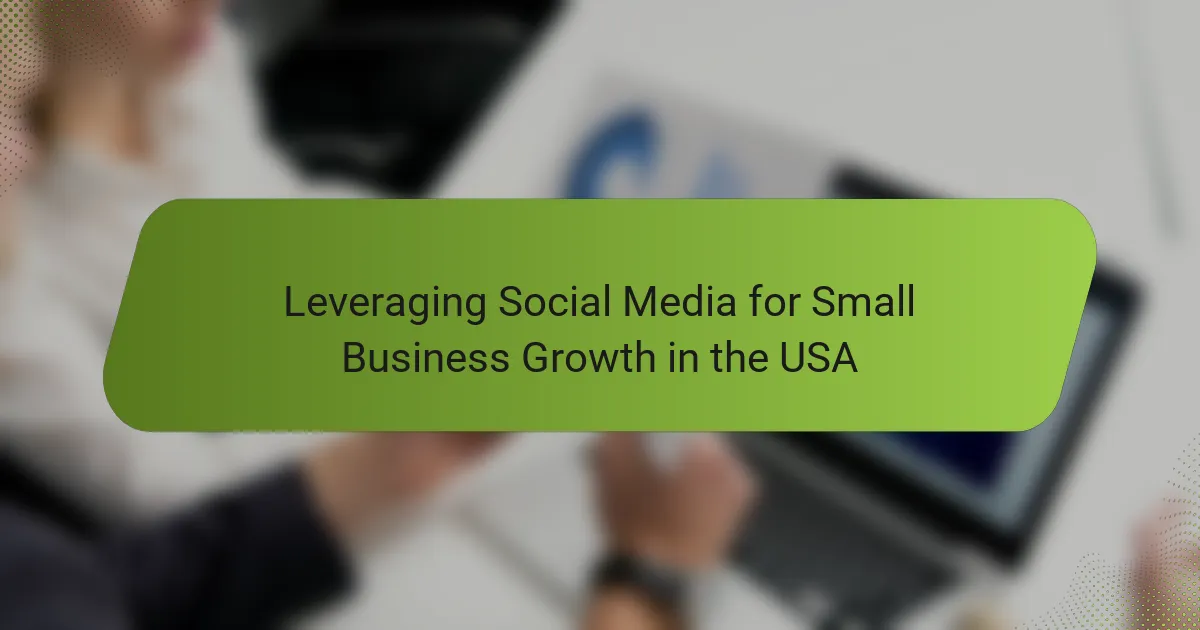Leveraging social media is essential for small businesses in the USA looking to enhance their growth and visibility. By utilizing platforms like Facebook, Instagram, LinkedIn, and Twitter, these businesses can engage with their audience, create targeted content, and drive sales without a hefty financial investment. Implementing effective strategies such as influencer partnerships and customer service through social channels can significantly boost brand loyalty and community engagement.
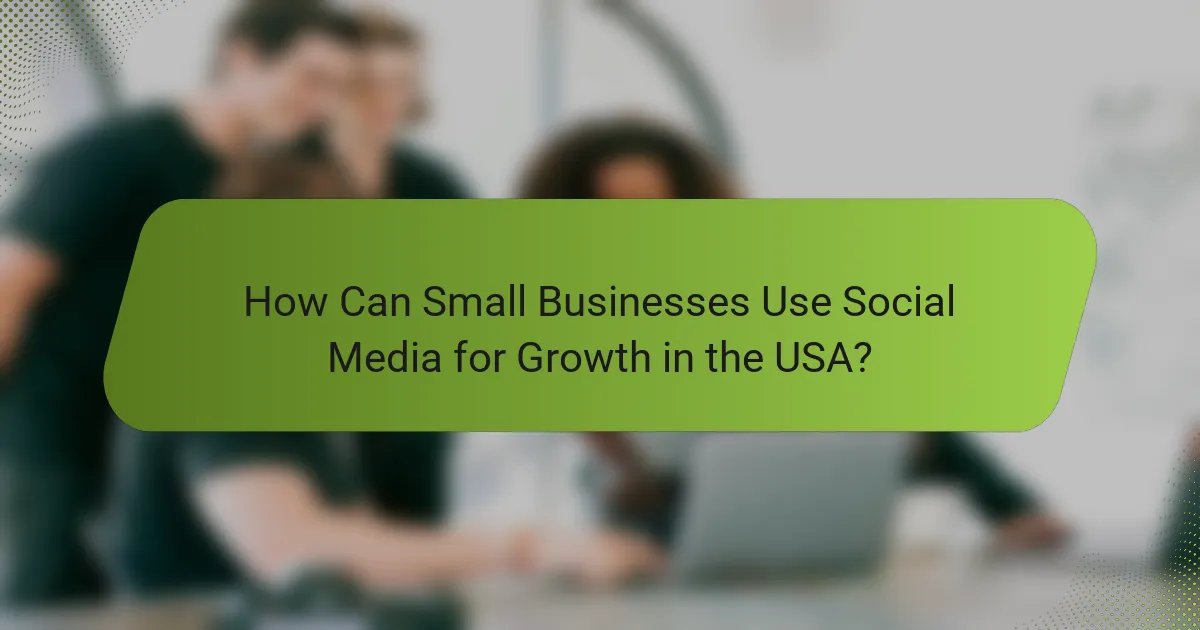
How Can Small Businesses Use Social Media for Growth in the USA?
Small businesses in the USA can leverage social media to enhance their growth by increasing brand visibility, engaging with customers, and utilizing targeted advertising. By effectively using these platforms, businesses can connect with their audience and drive sales without significant financial investment.
Increased brand awareness
Social media platforms provide small businesses with a powerful tool to increase brand awareness. By regularly posting engaging content, businesses can reach a wider audience and establish their brand identity. This visibility can lead to higher recognition and trust among potential customers.
To maximize brand awareness, businesses should focus on creating shareable content, such as infographics or videos, that resonates with their target audience. Utilizing hashtags and participating in trending conversations can also enhance visibility.
Enhanced customer engagement
Engaging with customers on social media allows small businesses to build stronger relationships. Responding to comments, messages, and reviews shows that the business values customer feedback and fosters loyalty. This interaction can lead to repeat business and referrals.
To enhance engagement, businesses should ask questions, run polls, and encourage user-generated content. Regularly hosting live sessions or Q&A events can also create a more personal connection with the audience.
Targeted advertising opportunities
Social media offers targeted advertising options that allow small businesses to reach specific demographics. Platforms like Facebook and Instagram enable businesses to tailor their ads based on location, age, interests, and behaviors, ensuring that marketing efforts are directed towards the most relevant audience.
Small businesses should set clear objectives for their advertising campaigns and utilize A/B testing to determine which ads perform best. Allocating a budget for paid promotions can significantly enhance reach and effectiveness.
Cost-effective marketing
Using social media for marketing is often more cost-effective than traditional advertising methods. Many platforms offer free account setups and low-cost advertising options, making it accessible for small businesses with limited budgets.
To maximize cost-effectiveness, businesses should focus on organic growth strategies, such as consistent posting and community engagement, while selectively investing in paid promotions that yield the best return on investment.
Access to analytics and insights
Social media platforms provide valuable analytics that help small businesses understand their audience better. Metrics such as engagement rates, reach, and demographics can inform marketing strategies and content creation.
Regularly reviewing these insights allows businesses to adjust their approach based on what resonates with their audience. Utilizing tools like Facebook Insights or Instagram Analytics can streamline this process and improve overall effectiveness.
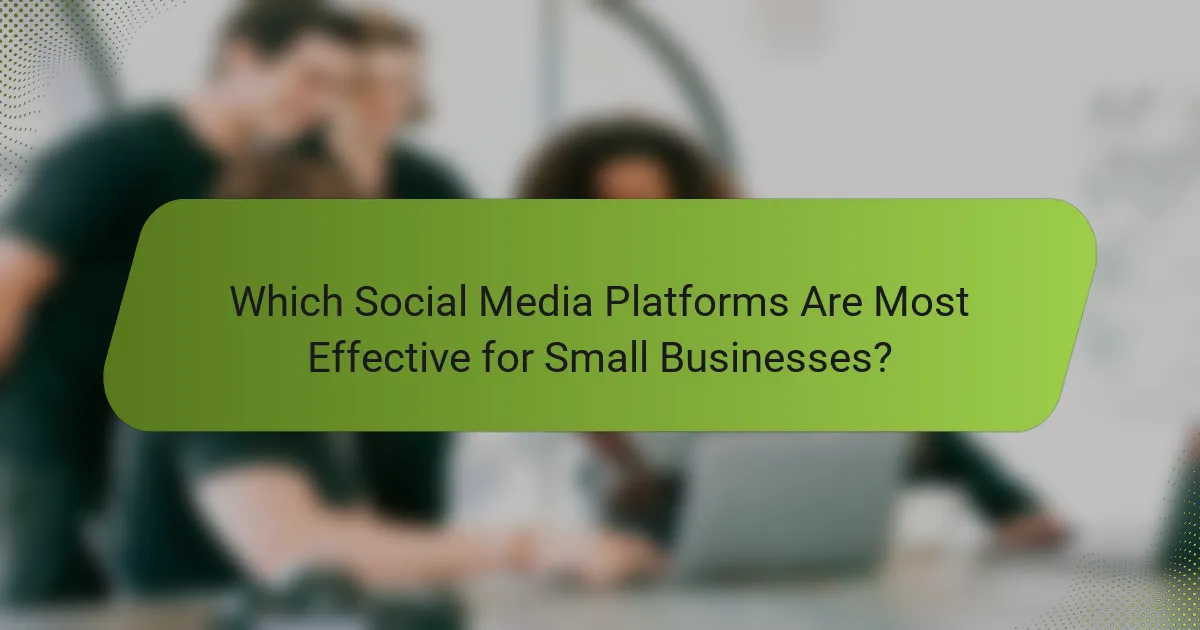
Which Social Media Platforms Are Most Effective for Small Businesses?
Small businesses in the USA can effectively grow by leveraging platforms like Facebook, Instagram, LinkedIn, and Twitter. Each platform offers unique features that cater to different aspects of marketing and community engagement.
Facebook for community building
Facebook is ideal for small businesses looking to build a community around their brand. With features like Groups and Events, businesses can foster direct interactions with customers, enhancing loyalty and engagement.
To maximize effectiveness, regularly post engaging content, respond to comments promptly, and utilize Facebook Ads to reach targeted demographics. Aim for a mix of promotional and community-focused posts to keep your audience engaged.
Instagram for visual marketing
Instagram excels in visual marketing, making it perfect for businesses that can showcase products through high-quality images and videos. Its emphasis on aesthetics allows brands to create a visually appealing feed that attracts followers.
Utilize Instagram Stories and Reels to share behind-the-scenes content or quick product demonstrations. Engaging with followers through polls and questions can also enhance interaction and brand loyalty.
LinkedIn for B2B networking
LinkedIn is the go-to platform for B2B networking, making it essential for small businesses targeting other companies. It allows for professional connections, sharing industry insights, and showcasing expertise through articles and posts.
To leverage LinkedIn effectively, optimize your company page, participate in relevant groups, and connect with industry leaders. Regularly sharing valuable content can position your business as a thought leader in your field.
Twitter for real-time engagement
Twitter is effective for real-time engagement, allowing small businesses to interact with customers and industry trends instantly. Its fast-paced nature makes it suitable for sharing updates, promotions, and customer service responses.
To make the most of Twitter, tweet regularly, use relevant hashtags, and engage in trending conversations. Responding quickly to customer inquiries can enhance your brand’s reputation and foster a loyal following.
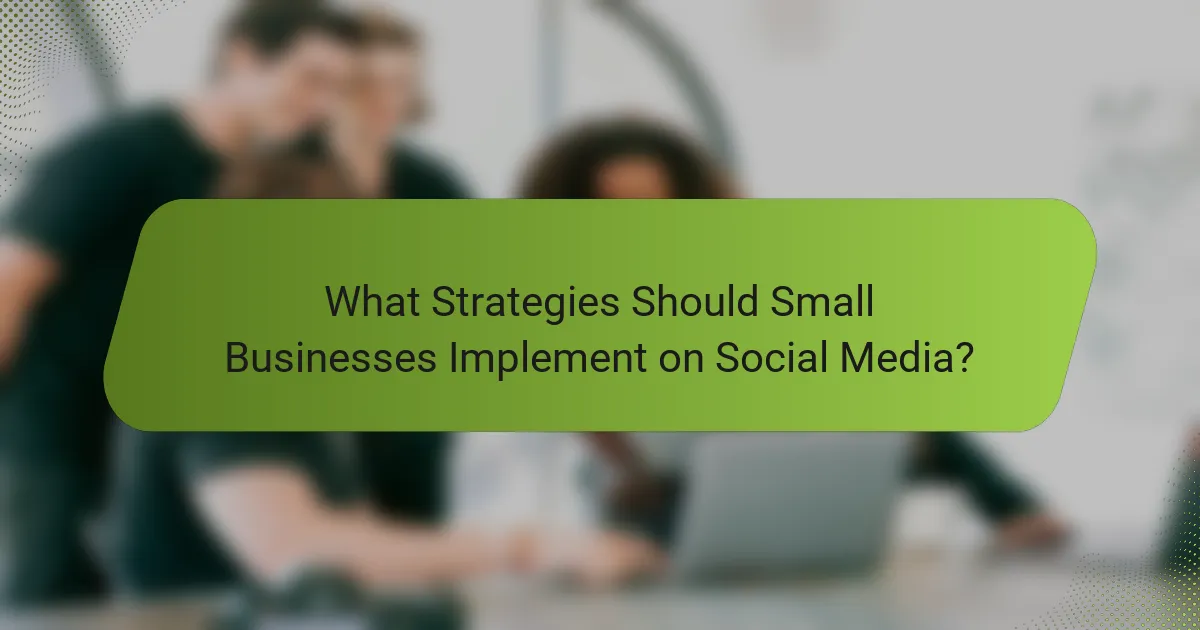
What Strategies Should Small Businesses Implement on Social Media?
Small businesses should focus on targeted content marketing, building influencer partnerships, providing customer service through social channels, and maintaining regular engagement. These strategies can enhance visibility, foster customer loyalty, and drive sales effectively.
Content marketing strategies
Content marketing involves creating and sharing valuable content to attract and engage a specific audience. Small businesses can utilize blogs, videos, infographics, and social media posts to showcase their products or services while providing useful information. Aim for a consistent posting schedule, ideally 2-3 times a week, to keep your audience engaged.
Consider using user-generated content, such as customer testimonials or photos, to build authenticity. Tools like Canva or Adobe Spark can help create visually appealing graphics without requiring extensive design skills.
Influencer partnerships
Partnering with influencers can significantly boost a small business’s reach and credibility. Choose influencers whose audience aligns with your target market, and consider micro-influencers for a more engaged following. Collaborations can include sponsored posts, product reviews, or giveaways.
When negotiating partnerships, be clear about expectations and deliverables. A budget of a few hundred to a few thousand dollars can often yield substantial returns, depending on the influencer’s reach and engagement rates.
Customer service through social channels
Providing customer service via social media channels is essential for small businesses. Quick responses to inquiries or complaints can enhance customer satisfaction and loyalty. Aim to respond to messages within a few hours, as many consumers expect timely replies.
Utilize features like Facebook Messenger or Instagram Direct to streamline communication. Consider setting up automated responses for common questions to improve efficiency while maintaining a personal touch.
Regular engagement and interaction
Regular engagement with your audience is crucial for building a loyal customer base. This includes liking, commenting, and sharing user-generated content, as well as actively participating in discussions. Aim to post engaging content daily or several times a week to maintain visibility.
Host live Q&A sessions, polls, or contests to encourage interaction and gather feedback. This not only boosts engagement but also provides insights into customer preferences and interests, helping to refine your marketing strategies.

How Can Small Businesses Measure Social Media Success?
Small businesses can measure social media success through various metrics that reflect engagement, conversions, and follower growth. Understanding these metrics helps businesses refine their strategies and improve their online presence.
Engagement metrics
Engagement metrics include likes, shares, comments, and overall interactions with posts. These figures indicate how well content resonates with the audience and can guide future content creation. For example, a post with high engagement may suggest a topic of interest that can be explored further.
To effectively track engagement, small businesses should regularly analyze their social media analytics tools, which provide insights into which posts perform best. Aim for a consistent engagement rate, ideally between 1% to 5%, depending on the platform and industry.
Conversion tracking
Conversion tracking measures the actions taken by users after interacting with social media content, such as making a purchase or signing up for a newsletter. This metric is crucial for understanding the return on investment (ROI) of social media efforts. Tools like Facebook Pixel or Google Analytics can help track these conversions accurately.
To enhance conversion tracking, small businesses should set clear goals for their campaigns and use UTM parameters to monitor traffic sources. Aiming for a conversion rate of around 2% to 5% can be a good benchmark for many small businesses.
Follower growth analysis
Follower growth analysis involves tracking the increase or decrease in followers over time, providing insight into brand awareness and audience interest. A steady growth rate indicates effective social media strategies, while sudden drops may signal issues that need addressing.
Small businesses should analyze follower growth monthly and correlate it with specific campaigns or content types. A growth rate of 5% to 10% per month is generally considered healthy, but this can vary by industry and platform.
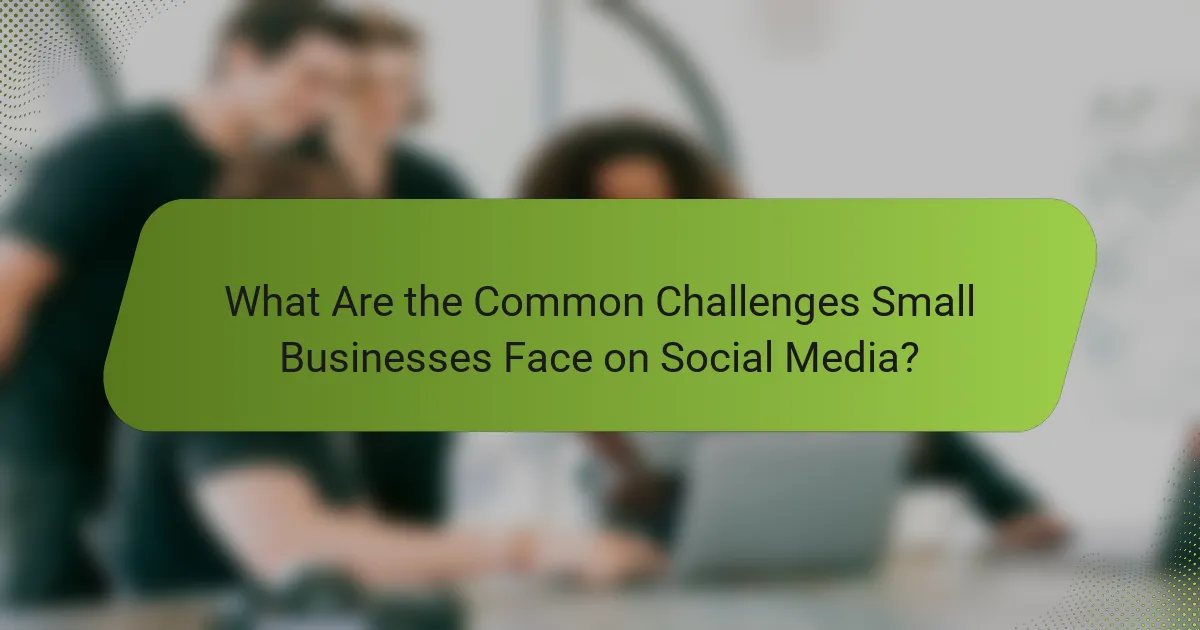
What Are the Common Challenges Small Businesses Face on Social Media?
Small businesses often encounter several challenges on social media, including limited resources and difficulties in creating engaging content. These obstacles can hinder their ability to effectively connect with their audience and grow their brand presence online.
Resource limitations
Resource limitations are a significant hurdle for small businesses on social media. Many lack the budget for dedicated social media teams or advertising, which can restrict their reach and engagement. For instance, a small business might only allocate a few hundred dollars monthly for social media promotions, making it tough to compete with larger brands.
To overcome resource constraints, small businesses can prioritize platforms that yield the best results for their target audience. Focusing on one or two social media channels can help maximize impact without spreading resources too thin. Utilizing free tools for scheduling and analytics can also streamline efforts.
Content creation difficulties
Creating compelling content consistently is another challenge for small businesses on social media. Many struggle to generate fresh ideas or produce high-quality visuals that resonate with their audience. This can lead to infrequent posting, which diminishes follower engagement.
To tackle content creation issues, small businesses can develop a content calendar to plan posts in advance, ensuring a steady flow of material. Engaging with customers through polls or questions can also generate ideas and foster community interaction. Additionally, repurposing existing content into different formats, such as turning blog posts into infographics, can save time and resources while keeping the content fresh.
